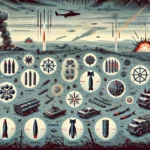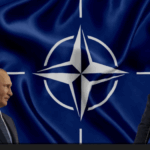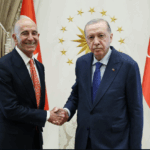Summary and Additional Remarks by Geopolist | Istanbul Center for Geopolitics:
The article contends that U.S. defense strategies must evolve beyond the obsolete notion of “near-peer threats,” which inflates the conventional military capabilities of Russia and China. Although both nations present strategic challenges, they do not possess the global reach and power projection comparable to that of the United States. The author advocates for an emphasis on unconventional threats, including proxy warfare, cyber operations, and economic influence. The article advocates for the reallocation of military resources and policies to address actual threats, highlighting the importance of a nuanced, data-driven approach for an effective national security strategy.
Principal Arguments and Examination:
Excessive focus on “Near-Peer Threats”: The article analyzes the U.S. military’s characterization of Russia and China as “near-peer” competitors, a designation that implies a level of parity not substantiated by the facts. The author contends that the global reach and force projection capabilities of the American military are significantly superior, rendering the comparison misleading. The U.S. Marine Expeditionary Units and Air Force bombers possess the capability to rapidly access nearly any location globally, a capacity that neither Russia nor China can replicate.
The article examines the limitations of the Chinese military, highlighting its modernization efforts while noting deficiencies in combat experience, logistics capabilities, and dependable indigenous technology. The People’s Liberation Army (PLA) has not engaged in a significant conflict for several decades, and many of its military assets, such as the J-20 stealth fighter, exhibit design and operational constraints. Corruption within its ranks, exemplified by the Rocket Force, compromises its operational effectiveness. The article emphasizes that while the Chinese Navy is frequently depicted as an ascending force, its operational capabilities are primarily confined to coastal waters.
The underperformance of the Russian military in Ukraine, coupled with logistical challenges and reliance on outdated equipment, indicates a decline in its operational capacity. The Russian military is experiencing a decline even in its historically dominant area of artillery. The Russian Navy is characterized as a deteriorating fleet, suffering from maintenance challenges and the attrition of significant vessels in the current conflict. The article posits that Russia’s conventional forces are overstretched, leading Moscow to adopt unconventional strategies, including the use of private military contractors and conscripts, to sustain its military operations.
Strategic Misalignment: The U.S. is encouraged to reevaluate its strategic priorities, transitioning from conventional deterrence to an emphasis on countering the asymmetric tactics and unconventional warfare methods that are more probable to be utilized by Russia and China. This encompasses the enhancement of cybersecurity, the implementation of economic deterrence, and the cultivation of capabilities for irregular warfare via proxy engagements. The author argues that classifying these states as “near-peers” could result in the misallocation of resources and strategic initiatives.
The article draws comparisons to the Iraq and Afghanistan wars, arguing that the U.S. military frequently misinterprets the nature of the conflicts it is preparing to engage in. In Iraq, the military was initially prepared for a conventional campaign but subsequently became involved in a complex insurgency. Focusing on conventional deterrence against Russia and China may overlook the real challenges posed by these adversaries, including economic pressure, disinformation, and cyber operations.
Recommendations for Reform: The article advocates for a reorganization of U.S. military and policy instruments, proposing that:
The Army ought to prioritize training in unconventional warfare and Security Force Assistance.
The Navy ought to establish a “brown water” capability to function efficiently in contested littoral areas.
The Air Force ought to prioritize capabilities similar to the discontinued OA-X program for light attack and reconnaissance.
The Marine Corps ought to revert to its foundational role as a rapid-response amphibious force.
The U.S. should invest in cyber defenses, enhance digital resilience, and reform export controls to sustain its technological advantage. The State and Commerce Departments ought to assume a more proactive role in tackling these challenges beyond the military domain.
The author highlights that America’s strategic vulnerabilities encompass both external and internal dimensions, pointing to political polarization and election controversies as potential avenues for exploitation by adversaries such as Russia and China. To counter disinformation and “active measures” campaigns, the United States requires a comprehensive governmental strategy that strengthens democratic institutions and fosters public trust.
Conclusion: The article asserts that an emphasis on exaggerated “near-peer” conventional threats may lead the U.S. to overlook the genuine asymmetric threats presented by Russia and China. A realistic and comprehensive threat assessment is essential to inform a strategy that addresses unconventional warfare, economic competition, and influence operations—domains in which these adversaries are more inclined to engage the U.S. and its allies.
Read more here.







